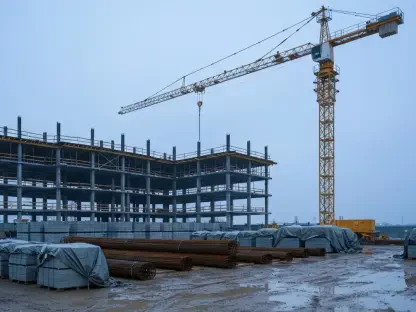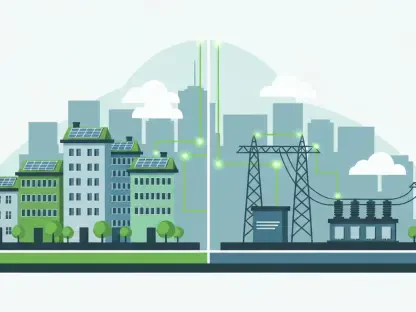I’m thrilled to sit down with Luca Calarailli, a renowned expert in construction, design, and architecture, whose passion for integrating technology into the industry has driven groundbreaking innovations. With decades of experience, Luca offers a unique perspective on the evolving landscape of infrastructure development and corporate strategies in construction. In our conversation, we dive into the strategic acquisitions shaping the industry, the impact on regional markets, the intersection of construction with emerging sectors like data centers, and the financial and operational growth trends that are setting new benchmarks for success.
How do recent acquisitions of material suppliers reflect broader trends in the construction and infrastructure sector?
These acquisitions are a clear sign of the industry’s shift toward vertical integration. Companies are looking to secure their supply chains by owning material sources like quarries and asphalt plants. This not only cuts costs but also ensures a steady flow of resources for large-scale projects. It’s a strategic move to stay competitive in both public and private markets, where demand for infrastructure—think roads, bridges, and even tech-driven projects—is soaring. It also positions firms to respond quickly to market needs, especially in high-growth areas.
What factors make certain companies attractive targets for acquisition in today’s market?
It often comes down to location and capabilities. Companies with assets in regions poised for growth, like the Southeast with its affordable land and resources, are prime targets. Additionally, firms with specialized logistics or unique assets—like river barges for material transport or a strong regional footprint—bring immediate value. It’s also about complementary strengths; acquiring a company that fills a gap in your operations or expands your reach into underrepresented areas can be a game-changer.
How do strategic acquisitions influence a company’s ability to expand into new regions?
Acquisitions are like planting flags in new territories. They provide an instant foothold—whether it’s access to local materials, established client networks, or operational infrastructure. For instance, expanding in the Southeast can tap into booming private investments, while strengthening presence along California’s Central Coast can shore up a weaker area of operations. It’s about building a denser, more resilient network that can handle diverse projects across geographies without starting from scratch.
In what ways are emerging markets like data centers reshaping the priorities of construction firms?
Data centers are a massive driver right now. They require extensive infrastructure—roads, parking, and utility connections—beyond just the buildings themselves. Construction firms are prioritizing materials supply and logistics to meet these needs quickly, especially in regions with cheap land and power. It’s pushing companies to rethink how they allocate resources and where they invest, focusing on areas where tech growth intersects with infrastructure demand. It’s not just about building; it’s about enabling the digital economy.
How do you see the financial implications of large-scale acquisitions playing out for companies in the long term?
Financially, these deals can be a double-edged sword. On one hand, they boost revenue significantly—adding hundreds of millions annually isn’t uncommon—and improve market positioning. On the other, the upfront costs, often in the hundreds of millions, require careful integration to avoid over-leveraging. Long term, success hinges on operational efficiency and whether the acquired assets deliver the projected growth. It’s a calculated risk, but when done right, it can redefine a company’s scale and profitability.
What are the key drivers behind record-high project backlogs in the construction industry today?
A lot of it comes down to a robust funding environment. Public infrastructure spending, especially from landmark legislation, hasn’t even peaked yet, with much of the money still unspent. Add to that a strong private market—think commercial developments and tech projects—and you’ve got a pipeline bursting with opportunities. Efficiency in operations and a focus on core markets also play a role, allowing companies to bid on and secure more projects than ever before, driving backlogs to unprecedented levels.
What challenges and opportunities do you see in achieving significant profit growth in a competitive market?
The biggest challenge is maintaining margins in a competitive bidding environment—everyone’s chasing the same projects. Rising material and labor costs don’t help. But the opportunities are there if you can streamline operations and integrate acquisitions effectively. Doubling net income in a year, as some firms have done, shows that focusing on high-demand markets and leveraging public funding can yield huge returns. It’s about being strategic with every dollar and every project you take on.
What is your forecast for the future of infrastructure development over the next decade?
I’m optimistic but cautious. We’re heading toward a peak in public infrastructure spending within the next few years, which will fuel growth in roads, bridges, and transit systems. At the same time, private investment in tech-driven projects like data centers will keep pushing boundaries. The challenge will be sustainability—balancing growth with environmental concerns and adapting to new technologies. I think we’ll see more smart infrastructure, with tech embedded into design and construction processes, shaping a more connected and efficient future.









